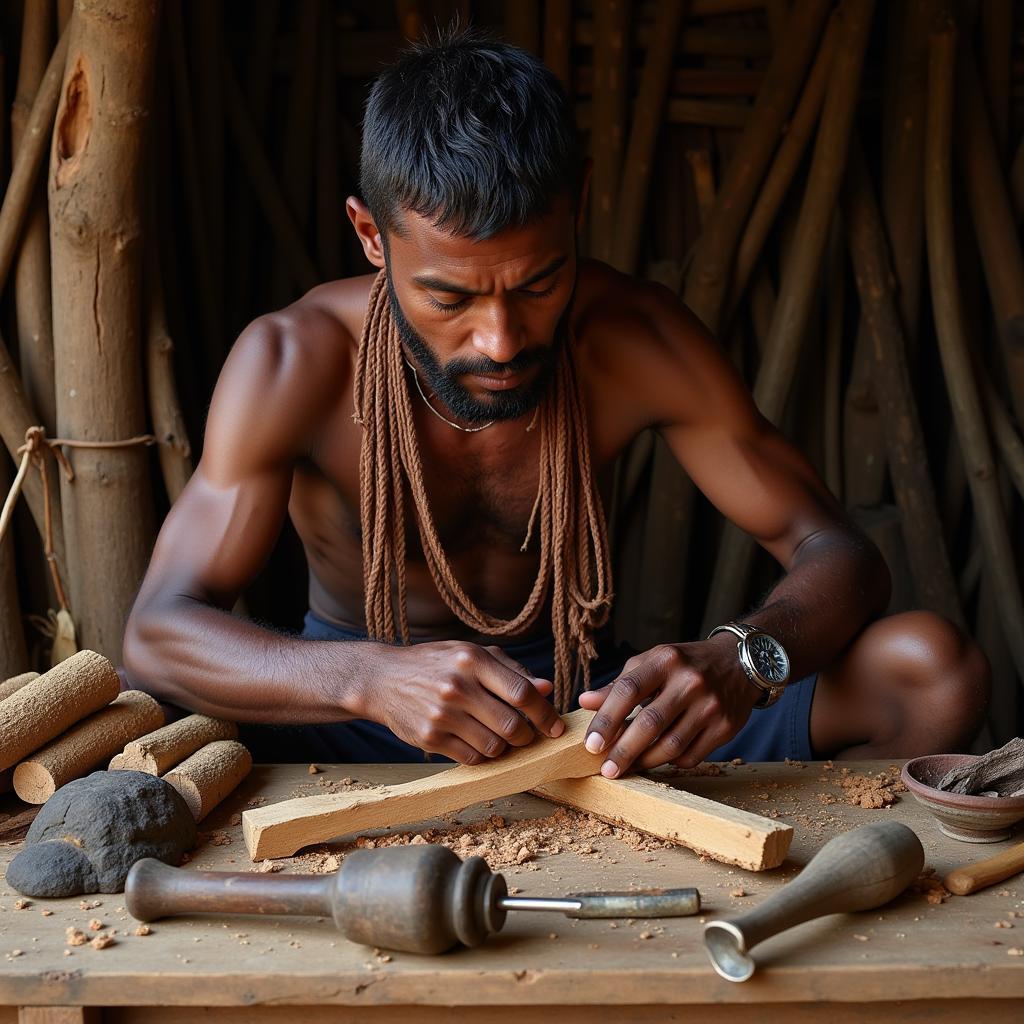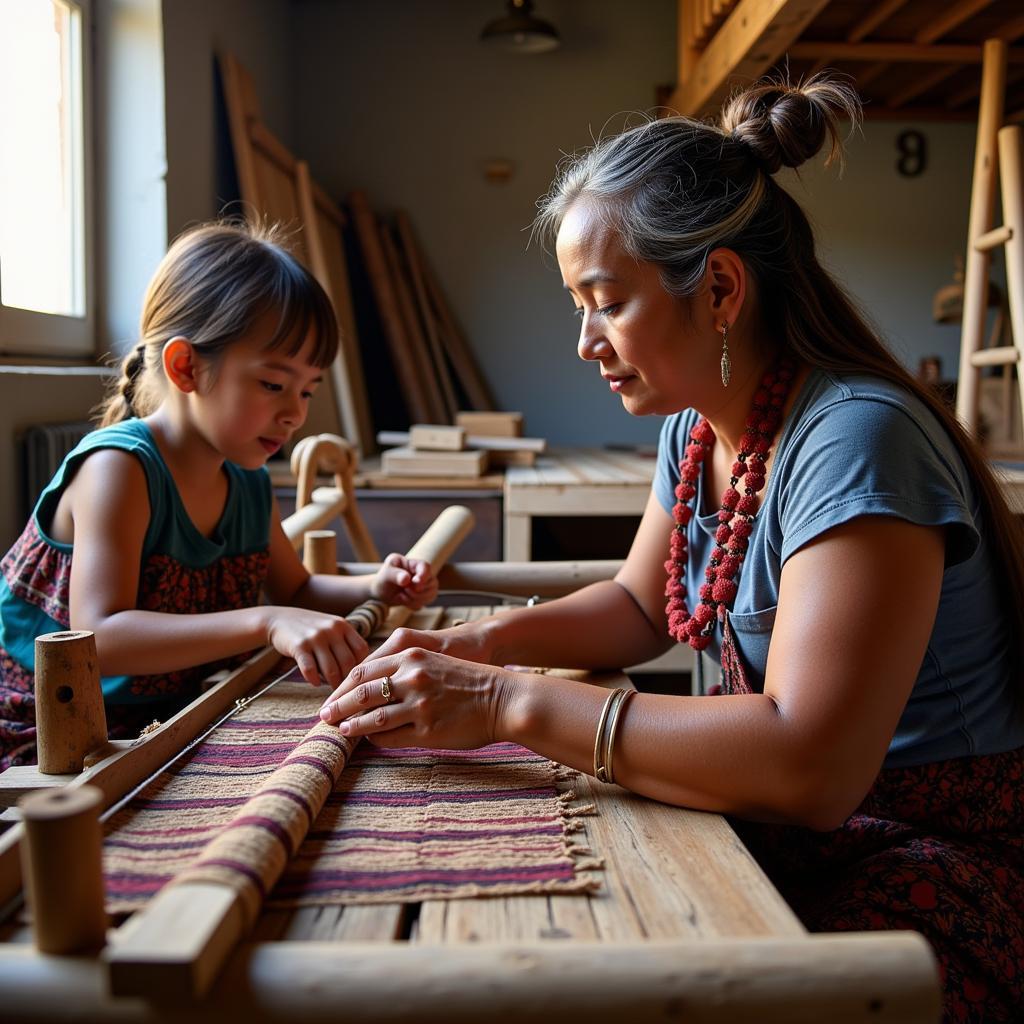In Nonindustrial Societies Artists hold a unique position, deeply interwoven with the cultural fabric of their communities. They aren’t just creators of aesthetically pleasing objects; they are storytellers, historians, and spiritual guides, their work reflecting the values, beliefs, and traditions of their people. Unlike the often individualized artistic expression found in industrialized societies, art in these communities is frequently collaborative, serving a collective purpose.
The Role of In Nonindustrial Societies Artists
Artists in nonindustrial societies often play a vital role in preserving and transmitting cultural heritage. Their work may depict historical events, myths, and legends, ensuring that these stories are passed down through generations. The creation of art itself can be a communal activity, involving multiple individuals and reinforcing social bonds. This collaborative process strengthens the community’s shared identity and reinforces the artist’s role as a cultural custodian.
- Artists are often integral to religious and spiritual practices.
- Their creations might be used in ceremonies, rituals, or as objects of veneration.
- This connection to the spiritual realm elevates the artist’s status within the community.
- They become intermediaries between the physical and spiritual worlds.
The materials used by these artists are often sourced directly from their environment, reflecting a deep connection to the natural world. From intricate carvings in wood and bone to vibrant paintings made with natural pigments, the art forms are intimately linked to the surrounding landscape. This connection reinforces the interdependence between the community and its environment, emphasizing the artist’s role in expressing this relationship.
 Artist in a nonindustrial society creating a wood carving
Artist in a nonindustrial society creating a wood carving
How Do In Nonindustrial Societies Artists Learn Their Craft?
The transmission of artistic skills in nonindustrial societies is typically through apprenticeship. Young learners observe and assist experienced artists, gradually acquiring the techniques and knowledge necessary to create their own works. This mentorship ensures the continuity of artistic traditions and reinforces the communal aspect of artistic practice. This hands-on approach allows for a deep understanding of the materials, processes, and cultural significance of the art form.
The Significance of Oral Tradition
Oral tradition plays a crucial role in passing down the stories, meanings, and cultural context behind the art. This spoken history, combined with practical training, provides a holistic education for aspiring artists, embedding them within a rich tapestry of cultural knowledge. Through stories, songs, and rituals, the younger generation learns not only the technical aspects of art-making but also the cultural values and beliefs that inform it.
 Apprenticeship in a nonindustrial society's artistic tradition
Apprenticeship in a nonindustrial society's artistic tradition
The Impact of Globalization on In Nonindustrial Societies Artists
Globalization has presented both challenges and opportunities for artists in nonindustrial societies. While increased exposure can lead to wider recognition and economic benefits, there is also a risk of cultural appropriation and the commodification of traditional art forms. Maintaining the integrity and cultural significance of their work in the face of these pressures is a critical concern for many artists and communities. Finding a balance between sharing their cultural heritage with the world and protecting it from exploitation is a complex but essential task.
Preserving Cultural Heritage in a Changing World
Efforts are being made to support and empower artists in nonindustrial societies to maintain their traditions while adapting to the changing global landscape. This includes initiatives focused on cultural preservation, fair trade practices, and the promotion of sustainable economic development. By valuing and respecting the unique contributions of these artists, we can help ensure the survival of diverse cultural expressions for generations to come.
“The art of nonindustrial societies is a powerful reminder of the interconnectedness of art, culture, and community. It is a testament to the enduring power of human creativity and the importance of preserving these rich traditions for future generations.” – Dr. Anya Sharma, Cultural Anthropologist
 Nonindustrial artist selling artwork at a fair trade market
Nonindustrial artist selling artwork at a fair trade market
Conclusion
In nonindustrial societies artists are more than just creators of beautiful objects; they are the keepers of cultural memory, the storytellers of their people, and the bridge between the physical and spiritual worlds. Their work reflects the values, beliefs, and traditions of their communities, providing a window into the rich tapestry of human experience. By understanding and appreciating the vital role these artists play, we can contribute to the preservation of their unique cultural heritage in an increasingly interconnected world.
FAQ
- What is the primary role of artists in nonindustrial societies? Preserving and transmitting cultural heritage.
- How are artistic skills typically passed down in these communities? Through apprenticeships and oral tradition.
- What are some challenges faced by in nonindustrial societies artists in a globalized world? Cultural appropriation and commodification of their art.
- How can we support the preservation of these unique artistic traditions? By promoting fair trade practices and supporting cultural preservation initiatives.
- What materials do artists in nonindustrial societies typically use? Materials sourced directly from their environment, such as wood, bone, and natural pigments.
- How does art contribute to the community in nonindustrial societies? It strengthens social bonds, reinforces shared identity, and connects the community to its environment and spiritual beliefs.
- Why is it important to understand the role of artists in nonindustrial societies? It helps us appreciate the diversity of human expression and the importance of preserving cultural heritage.
Contact Us
For any assistance or further information, please contact us:
Phone: 02043854663
Email: [email protected]
Address: Khu 34, Bac Giang, 260000, Vietnam
Our customer support team is available 24/7.